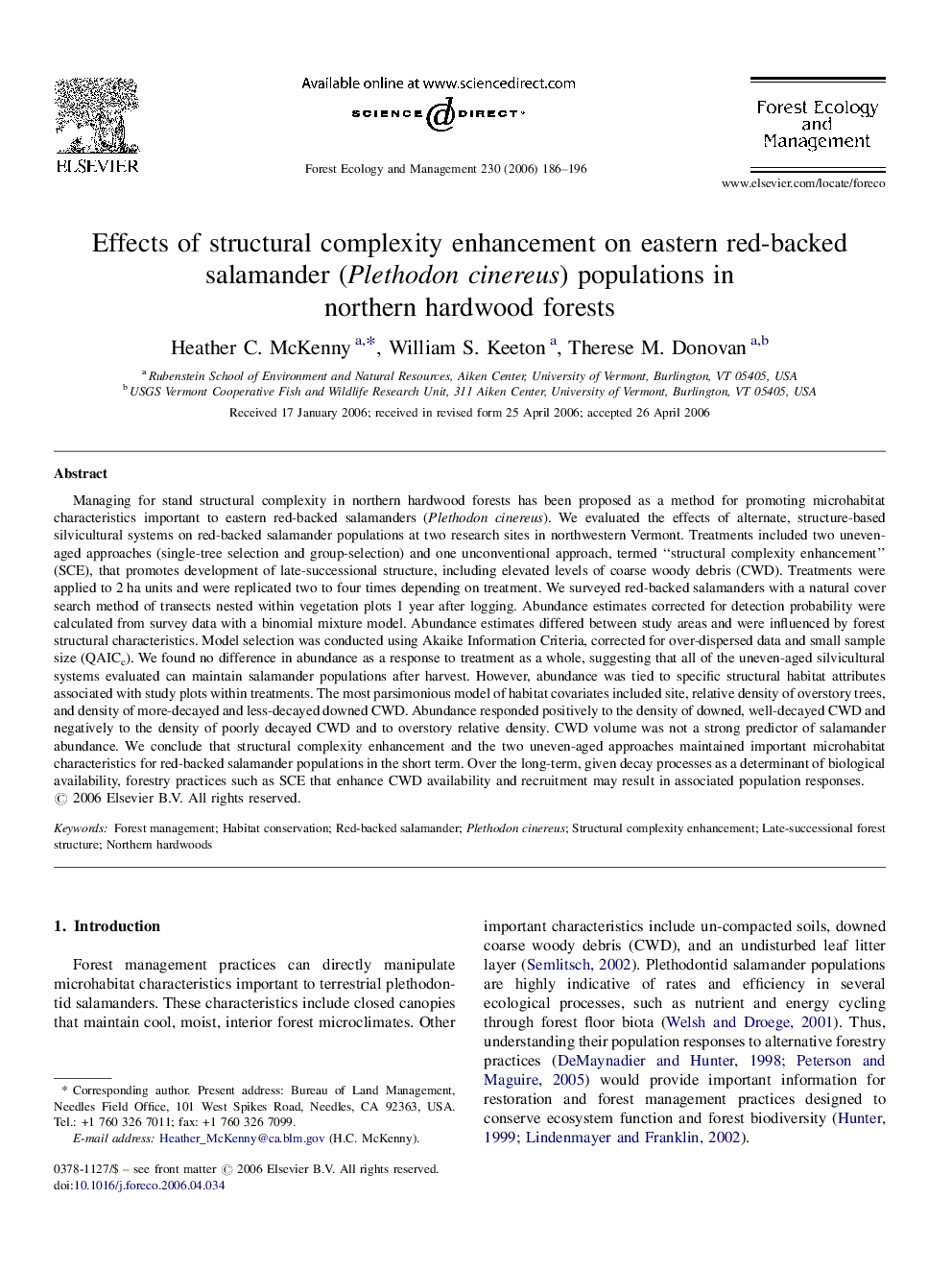| کد مقاله | کد نشریه | سال انتشار | مقاله انگلیسی | نسخه تمام متن |
|---|---|---|---|---|
| 90442 | 159381 | 2006 | 11 صفحه PDF | دانلود رایگان |

Managing for stand structural complexity in northern hardwood forests has been proposed as a method for promoting microhabitat characteristics important to eastern red-backed salamanders (Plethodon cinereus). We evaluated the effects of alternate, structure-based silvicultural systems on red-backed salamander populations at two research sites in northwestern Vermont. Treatments included two uneven-aged approaches (single-tree selection and group-selection) and one unconventional approach, termed “structural complexity enhancement” (SCE), that promotes development of late-successional structure, including elevated levels of coarse woody debris (CWD). Treatments were applied to 2 ha units and were replicated two to four times depending on treatment. We surveyed red-backed salamanders with a natural cover search method of transects nested within vegetation plots 1 year after logging. Abundance estimates corrected for detection probability were calculated from survey data with a binomial mixture model. Abundance estimates differed between study areas and were influenced by forest structural characteristics. Model selection was conducted using Akaike Information Criteria, corrected for over-dispersed data and small sample size (QAICc). We found no difference in abundance as a response to treatment as a whole, suggesting that all of the uneven-aged silvicultural systems evaluated can maintain salamander populations after harvest. However, abundance was tied to specific structural habitat attributes associated with study plots within treatments. The most parsimonious model of habitat covariates included site, relative density of overstory trees, and density of more-decayed and less-decayed downed CWD. Abundance responded positively to the density of downed, well-decayed CWD and negatively to the density of poorly decayed CWD and to overstory relative density. CWD volume was not a strong predictor of salamander abundance. We conclude that structural complexity enhancement and the two uneven-aged approaches maintained important microhabitat characteristics for red-backed salamander populations in the short term. Over the long-term, given decay processes as a determinant of biological availability, forestry practices such as SCE that enhance CWD availability and recruitment may result in associated population responses.
Journal: Forest Ecology and Management - Volume 230, Issues 1–3, 15 July 2006, Pages 186–196